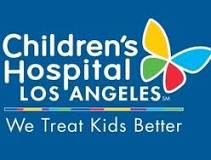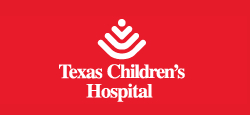N2007-01: Ultratrace™ Iobenguane I 131 in Patients With Relapsed/Refractory High-Risk Neuroblastoma
| Status: | Completed |
|---|---|
| Conditions: | Brain Cancer |
| Therapuetic Areas: | Oncology |
| Healthy: | No |
| Age Range: | 1 - 30 |
| Updated: | 10/6/2017 |
| Start Date: | June 2008 |
| End Date: | November 2010 |
A Phase 2a Study of Ultratrace™ Iobenguane I 131 in Patients With Relapsed/Refractory High-Risk Neuroblastoma
RATIONALE: Radioactive drugs, such as iodine I 131 metaiodobenzylguanidine (MIBG), may carry
radiation directly to tumor cells and not harm normal cells. A bone marrow or peripheral stem
cell transplant using stem cells from the patient may be able to replace blood-forming cells
that were destroyed by I 131 MIBG.
PURPOSE: This phase II trial is studying the side effects and best dose of iodine I 131 MIBG
followed by a stem cell transplant in treating young patients with relapsed or refractory
high-risk neuroblastoma.
radiation directly to tumor cells and not harm normal cells. A bone marrow or peripheral stem
cell transplant using stem cells from the patient may be able to replace blood-forming cells
that were destroyed by I 131 MIBG.
PURPOSE: This phase II trial is studying the side effects and best dose of iodine I 131 MIBG
followed by a stem cell transplant in treating young patients with relapsed or refractory
high-risk neuroblastoma.
OBJECTIVES:
Primary
- To establish the maximum tolerated dose of iodine I 131 metaiodobenzylguanidine
(^131I-MIBG) in patients with relapsed/refractory high-risk neuroblastoma.
Secondary
- To describe toxicity following treatment with ^131I-MIBG in patients with
relapsed/refractory high-risk neuroblastoma.
- To estimate radiation absorbed doses to measurable lesions and to a standard set of
normal organs following a 0.1 mCi/kg [3.7 MBq/kg] (minimum dose of 1.0 mCi [37 MBq] but
not to exceed 5.0 mCi [185 MBq]) intravenous administration of ^131I-MIBG in patients
with relapsed/refractory high-risk neuroblastoma.
- To describe, within the confines of a phase IIa trial, objective tumor response
following treatment with ^131I-MIBG in patients with relapsed/refractory high-risk
neuroblastoma.
- To explore dose-response following treatment with ^131I-MIBG in patients with
relapsed/refractory high-risk neuroblastoma.
- To explore quality of life assessment following treatment with ^131I-MIBG in patients
with relapsed/refractory high-risk neuroblastoma.
OUTLINE:
- Dosimetry: Patients receive a dosimetric dose of iodine I 131 metaiodobenzylguanidine
(^131I-MIBG) IV over 1-3 minutes. Patients then undergo 2 or 3 MIBG scans within 5 days
of the dosimetry dose to assess biodistribution and tumor uptake. Patients with normal
tumor uptake and biodistribution proceed to treatment.
- Treatment: Within 1-4 weeks of the dosimetric dose, patients with normal tumor uptake
and biodistribution receive a therapeutic dose of ^131I-MIBG IV over 1 hour on day 0 and
undergo MIBG scan on day 7. Patients then proceed to autologous stem cell infusion.
- Autologous stem cell infusion: Patients receive an infusion of autologous stem cells
from peripheral blood or bone marrow on day 14. Patients with an ANC of < 500/µl at any
point after autologous stem cell infusion receive filgrastim (G-CSF) IV or
subcutaneously once daily until ANC is > 2,000/µl.
Patients complete a quality of life questionnaire at baseline and then at day 60.
After completion of study treatment, patients are followed at day 60 and periodically
thereafter.
Primary
- To establish the maximum tolerated dose of iodine I 131 metaiodobenzylguanidine
(^131I-MIBG) in patients with relapsed/refractory high-risk neuroblastoma.
Secondary
- To describe toxicity following treatment with ^131I-MIBG in patients with
relapsed/refractory high-risk neuroblastoma.
- To estimate radiation absorbed doses to measurable lesions and to a standard set of
normal organs following a 0.1 mCi/kg [3.7 MBq/kg] (minimum dose of 1.0 mCi [37 MBq] but
not to exceed 5.0 mCi [185 MBq]) intravenous administration of ^131I-MIBG in patients
with relapsed/refractory high-risk neuroblastoma.
- To describe, within the confines of a phase IIa trial, objective tumor response
following treatment with ^131I-MIBG in patients with relapsed/refractory high-risk
neuroblastoma.
- To explore dose-response following treatment with ^131I-MIBG in patients with
relapsed/refractory high-risk neuroblastoma.
- To explore quality of life assessment following treatment with ^131I-MIBG in patients
with relapsed/refractory high-risk neuroblastoma.
OUTLINE:
- Dosimetry: Patients receive a dosimetric dose of iodine I 131 metaiodobenzylguanidine
(^131I-MIBG) IV over 1-3 minutes. Patients then undergo 2 or 3 MIBG scans within 5 days
of the dosimetry dose to assess biodistribution and tumor uptake. Patients with normal
tumor uptake and biodistribution proceed to treatment.
- Treatment: Within 1-4 weeks of the dosimetric dose, patients with normal tumor uptake
and biodistribution receive a therapeutic dose of ^131I-MIBG IV over 1 hour on day 0 and
undergo MIBG scan on day 7. Patients then proceed to autologous stem cell infusion.
- Autologous stem cell infusion: Patients receive an infusion of autologous stem cells
from peripheral blood or bone marrow on day 14. Patients with an ANC of < 500/µl at any
point after autologous stem cell infusion receive filgrastim (G-CSF) IV or
subcutaneously once daily until ANC is > 2,000/µl.
Patients complete a quality of life questionnaire at baseline and then at day 60.
After completion of study treatment, patients are followed at day 60 and periodically
thereafter.
Inclusion Criteria:
- Patients must be at least one year and no more than 30 years of age when registered on
this study.
- Patients must have high risk neuroblastoma and either have tumor left after treatment
started at diagnosis or have had the tumor grow back (relapsed) after getting some
treatment
- Patients must an MIBG scan done and it must be positive for neuroblastoma.
- Patients must have a PBSC or bone marrow stem cell product available that meets study
criteria. If they don't already have stem cells frozen away then they must be able to
have a stem cell pheresis done to collect the necessary amount of stem cells for study
entry and these stem cells must meet study criteria.
- Patients must have adequate heart, lung, liver, kidney and bone marrow function.
Exclusion Criteria:
- They have had a stem cell transplant using another person as the stem cell donor. (You
can still be in the study if a previous transplant used your own stem cells)
- They have other medical problems that could get much worse if they had this treatment.
- They are on dialysis for badly working kidneys or have other kidney problems.
- They are pregnant or breast feeding.
- They have tumor in the brain or spinal cord that is seen on a CT or MRI scan one month
before starting treatment
- They had total body radiation or radiation to the entire belly.
- They have a known allergy to MIBG, iodine or SSKI.
- They can't cooperate with the special precautions that are needed during UltratraceTM
MIBG treatment or with other safety monitoring requirements of the study..
We found this trial at
8
sites
Childrens Hospital Los Angeles Children's Hospital Los Angeles is a 501(c)(3) nonprofit hospital for pediatric...
Click here to add this to my saved trials
Click here to add this to my saved trials
3333 Burnet Avenue # Mlc3008
Cincinnati, Ohio 45229
Cincinnati, Ohio 45229
1-513-636-4200

Cincinnati Children's Hospital Medical Center Patients and families from across the region and around the...
Click here to add this to my saved trials
Children's Hospital of Philadelphia Since its start in 1855 as the nation's first hospital devoted...
Click here to add this to my saved trials
1600 Divisadero Street
San Francisco, California 94115
San Francisco, California 94115
888.689.8273

UCSF Helen Diller Family Comprehensive Cancer Center UCSF’s long tradition of excellence in cancer research...
Click here to add this to my saved trials
Click here to add this to my saved trials
Texas Children's Hospital Texas Children's Hospital, located in Houston, Texas, is a not-for-profit organization whose...
Click here to add this to my saved trials
Palo Alto, California 95798
Click here to add this to my saved trials


